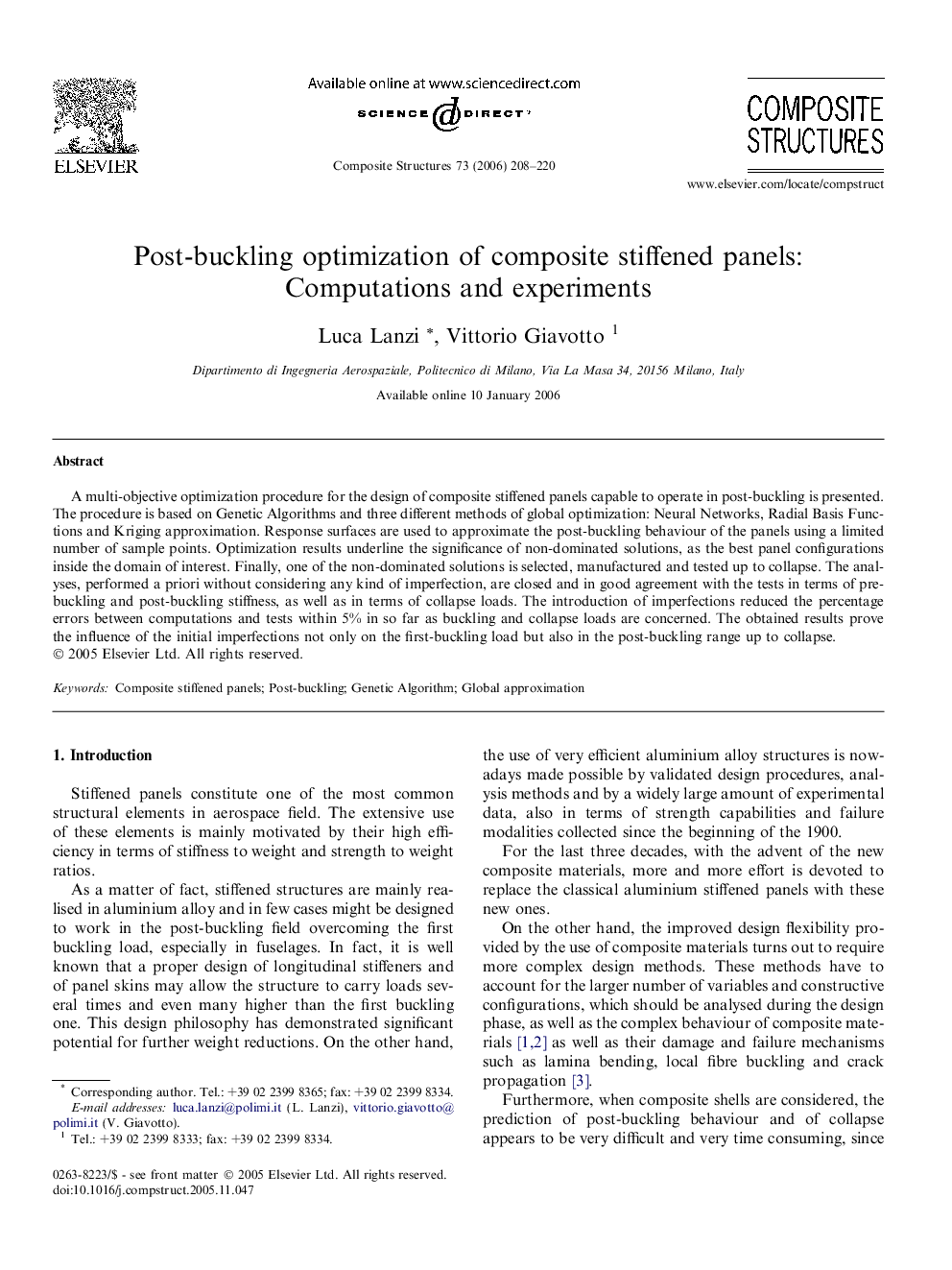| Article ID | Journal | Published Year | Pages | File Type |
|---|---|---|---|---|
| 254381 | Composite Structures | 2006 | 13 Pages |
A multi-objective optimization procedure for the design of composite stiffened panels capable to operate in post-buckling is presented. The procedure is based on Genetic Algorithms and three different methods of global optimization: Neural Networks, Radial Basis Functions and Kriging approximation. Response surfaces are used to approximate the post-buckling behaviour of the panels using a limited number of sample points. Optimization results underline the significance of non-dominated solutions, as the best panel configurations inside the domain of interest. Finally, one of the non-dominated solutions is selected, manufactured and tested up to collapse. The analyses, performed a priori without considering any kind of imperfection, are closed and in good agreement with the tests in terms of pre-buckling and post-buckling stiffness, as well as in terms of collapse loads. The introduction of imperfections reduced the percentage errors between computations and tests within 5% in so far as buckling and collapse loads are concerned. The obtained results prove the influence of the initial imperfections not only on the first-buckling load but also in the post-buckling range up to collapse.
